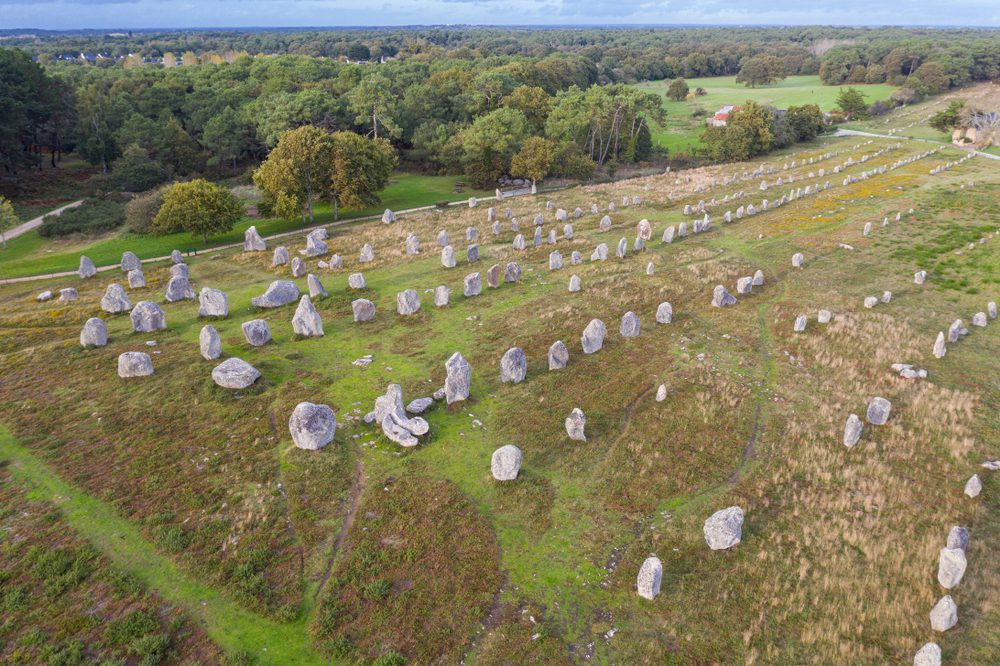The Carnac stones have inspired stories and fueled myths for thousands of years. Along the south coast of Brittany in northwestern France, an unassuming field is studded with around 3,000 ancient megaliths. Their original purpose, however, remains a total mystery.
The Carnac stones were likely placed during the Neolithic era before the advent of agriculture in the area. It’s said the stones date back to 4500 BCE, but it’s thought they were moved here to the field in the Carnac region around 3300 BCE.
Either way, that’s older than Stonehenge in southern England, which is estimated to have been built in numerous stages from 3000 BCE to 2000 BCE.

Aerial shot of some of the Carnac stones. Image credit: Alla Khananashvili/Shutterstock.com
The Carnac stones are the largest collection of ancient megaliths in the world. The thousands of rocks are spread across an area of around 3 kilometers (1.8 miles).
Most are carved from granite taken from the local area, but some appear to have been sourced from quarries in eastern Le Manio, up to 40 kilometers (24 miles) away. That’s a pretty incredible feat considering this likely took place over 6,000 years ago.
Although many of the stones have been placed in a repetitive and orderly fashion, they are not uniform and can be split into a number of different categories based on their shape and alignment, known as Le Ménec, Kermario, and Kerlescan.
Since the beginning of the 19th century, the Carnac stones have been described as a “temple” that likely had some spiritual significance. There were even attempts to prove the stones are placed to align with the stars and planets, but these hypotheses have fallen flat. Still today, there is no widely accepted theory on their purpose.

Carnac stones run for as long as the eyes can see. Image credit: Alexandre G. ROSA/Shutterstock.com
Carnac also baffled the Romans when they occupied Brittany from the 1st century BCE until the 5th century CE. Over the centuries, several myths surrounded the stones. One tale said the stones were pagan soldiers that had been turned to stone by Pope Cornelius, while another legend says they were a Roman legion that Merlin the wizard cast into stone.
“There are plenty of interesting theories, some with examples that seem to fit in certain circumstances, but there’s always more to disprove them than to prove them,” Olivier Agogué, the administrator of the site, told BBC Travel in September 2022.
“The Carnac Alignments are not straight, they meander and follow a ridge that separates the coastal plain from the interior, land-based world, likely acting as a kind of symbolic border between the two. Of course, it did not prevent people from passing between them, but it marks a geographical separation between land and sea that isn’t random. But, its ceremonial or religious significance is open to interpretation,” he added.
Source Link: Carnac Stones Of France Are Older, Bigger, And Weirder Than Stonehenge